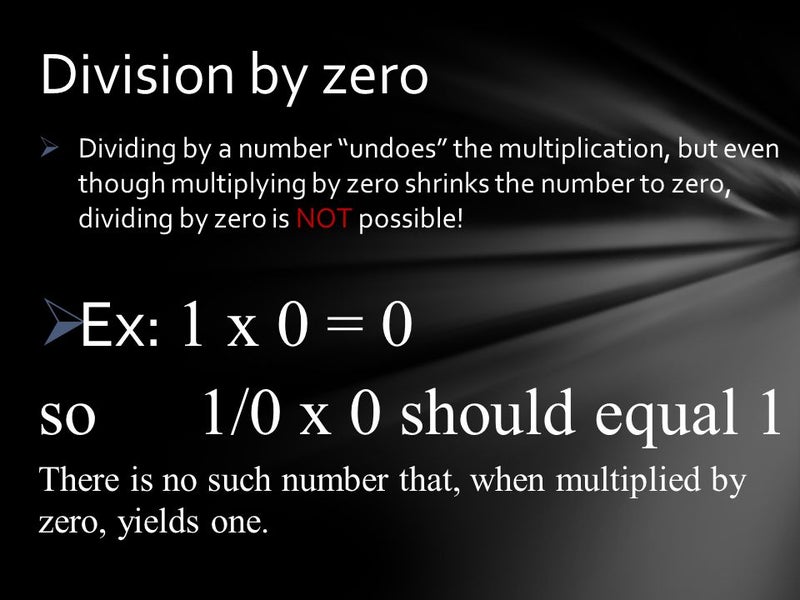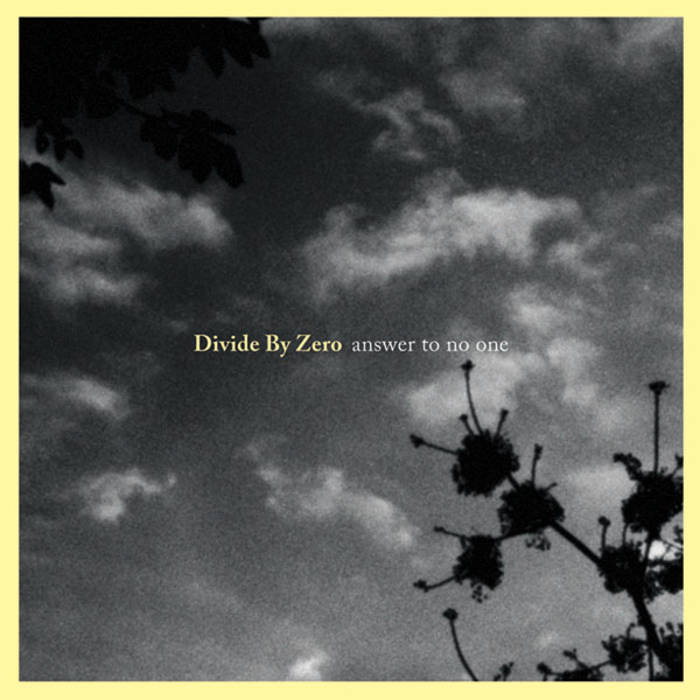Kaliyuga Ends by 2025, Mystry
Mysteries of the Yuga Cycle: Kali Yuga to end in 2025?
Mysteries of the Kali Yuga Cycle to end in 2025?
1. When will Kali Yuga end?
According to Vedic reckoning we are now in Kali Yuga, an unspiritual age of ignorance, sin and short lifespan. The other three ages are: Satya Yuga (Age of Wisdom and Truth), Treta Yuga (Silver Age), and the Dwapara Yuga (Copper Age). In the ‘Brahma-Vaivarta Purana’, Lord Krishna says that Kali Yuga will end 5,000 years after its beginning, giving way to a Golden Age. So when exactly is this change happening? Are we sitting on some sort of a time bomb?
2. The one-legged Bull
Hindus believe that human civilization degenerates spiritually during the Kali Yuga, which is referred to as the Dark Age because in it people are as far removed as possible from God. Hinduism often symbolically represents morality (dharma) as a bull. In Satya Yuga, the bull has four legs, but in each age morality is reduced by one quarter. By the age of Kali, morality is reduced to only a quarter of that of the golden age, so that the bull of Dharma has only one leg.
3. Unraveling the Yuga Cycle Timeline
In the Mahabharata, Hanuman gives the following description of the Yuga Cycle to the Pandava prince Bhima: “The Krita Yuga was so named because there was but one religion, and all men were saintly: therefore they were not required to perform religious ceremonies…there were no poor and no rich; there was no need to labour because all that men required was obtained by the power of will…The Krita Yuga was without disease; there was no hatred, or vanity, or evil thought whatsoever; no sorrow, no fear.”
4. Unraveling the Yuga Cycle Timeline
“In the Treta Yuga sacrifices began, and the World Soul became Red; virtue lessened a quarter. Mankind sought truth and performed religious ceremonies; they obtained what they desired by giving and by doing. In the Dwapara Yuga the aspect of the World Soul was Yellow: religion lessened one-half. The Veda was divided into four parts though some knew the four Vedas, others knew few. Mind lessened, Truth declined, and there came desire and diseases and calamities; because of these men had to undergo penances.”
5. The Kali Yuga mystery
In spite of the elaborate theological framework which describes the characteristics of this age, the start and end dates of the Kali Yuga remain shrouded in mystery. The popularly accepted date for the beginning of the Kali Yuga is 3102 BC, thirty-five years after the conclusion of the great battle of the Mahabharata. This is remarkably close to the proposed beginning of the “Great Cycle” of the Mayan Calendar in 3114 BC.
6. The Kali Yuga mystery
It is generally believed that Aryabhatta had calculated the start date of the Kali Yuga on the basis of the information in the Sanskrit astronomical treatise, the Surya Siddhanta, according to which the five planets visible to the naked eye – Mercury, Venus, Mars, Jupiter and Saturn – were aligned to 0° of Aries at the beginning of the Kali Yuga. He, thus, arrived at the date of 17/18 February, 3102 BC as the starting point of the Kali Yuga.
7. Were Aryabhatta’s calculations wrong?
However, modern simulations carried out by Richard Thompson show that on 17/18 February, 3102 BC, the five geocentric planets occupied an arc of roughly 42° in the sky and were scattered over three zodiacal signs – Aries, Pisces and Aquarius. This cannot be considered as a conjunction by any means. In other words, the conjunction of geocentric planets at 0° of Aries that was supposedly targeted by Aryabhatta did not take place in 3102 BC.
8. Seems like Aryabhatta was misunderstood
Does this mean Aryabhatta made an error in his back calculations? Not really. For, the Surya Siddhanta does not ever specify that such an alignment of planets took place at the beginning of the Kali Yuga. On the contrary, the Surya Siddhanta explicitly states that this conjunction of planets at 0° of Aries takes place at the end of the Golden Age (Satya/Krita Yuga).
9. Day and Night of Brahma
The general understanding in ancient Hindu astronomy was that all the planets commenced their movement together at 0° of Aries but returned to the same position in the heavens, at certain fixed intervals, resulting in a universal conjunction. The Surya Siddhanta states that this conjunction takes place at the end of the Golden Age. However, there is also a prevailing belief in Hindu astronomy that this conjunction takes place at the beginning of a Day and Night of Brahma, comprising of a 1000 Yuga Cycles.
10. Looking for an evidence
There can be no doubt that the 3102 BC date for the Kali Yuga does not have a basis. The date virtually pops out of nowhere. Before 500 CE, this date was not mentioned in any Sanskrit text. From where, then, did Aryabhatta obtain this date? There seems to be no indication that Aryabhatta had computed this date himself. There is a single reference to this date in the text Aryabhatiya, where Aryabhatta mentions that the text was composed 3,600 years into the Kali Yuga.
11. Ambiguity regarding Kaliyuga’s beginning
Since the Aryabhatiya was composed in 499 CE, the beginning of the Kali Yuga can be traced back to 3102 BC. The statement, by itself, does not reveal any information about the astronomical basis on which the date was calculated, or whether the calculation was performed by Aryabhatta himself. It is possible that this date was adopted by Aryabhatta from some other source. The vagueness surrounding the origin of this date makes its validity highly susceptible.
12.The truth behind the Yuga Cycle
As pointed out by Sri Yukteswar, in many Sanskrit texts the 12,000 year duration of the Yuga Cycle was artificially inflated to an abnormally high value of 4,320,000 years by introducing a multiplication factor of “360”, which was represented as the number of “human years” which constitutes a “divine year”. However, certain texts, such as the Mahabharata and the Laws of Manu, still retain the original value of the Yuga Cycle as 12,000 years.
13. The truth behind the Yuga Cycle
Yukteswar also clarified in the book The Holy Science (1894), that a complete Yuga Cycle takes 24,000 years, and is comprised of an ascending cycle of 12,000 years when virtue gradually increases and a descending cycle of another 12,000 years, in which virtue gradually decreases. Hence, after we complete a 12,000 year descending cycle from Satya Yuga -> Kali Yuga, the sequence reverses itself, and an ascending cycle of 12,000 years begins which goes from Kali Yuga -> Satya Yuga.
14. The years in each Yuga
Following values are provided in the Sanskrit texts for the duration of the Yugas and their dawns and twilights. Satya Yuga (Golden Age): 4000 years + 400 years dawn + 400 years twilight = 4800 years. Treta Yuga (Silver Age): 3000 years + 300 years dawn + 300 years twilight = 3600 years. Dwapara Yuga (Bronze Age): 2000 years + 200 years dawn + 200 years twilight = 2400 years. Kali Yuga (Iron Age): 1000 years + 100 years dawn + 100 years twilight = 1200 years.
15. The years in each Yuga
Since so many inaccuracies have crept into the Yuga Cycle doctrine, we also need to question the accuracy of the relative durations of the Yugas mentioned in the Sanskrit texts. Although the Yuga Cycle is mentioned in the mythic accounts of around thirty ancient cultures, we find very little information regarding the relative durations of the different ages within this cycle. Nearly all the accounts tell us that virtue and righteousness decreases as we move from the Golden Age to the subsequent ages.
16. Accounts from rest of the world
In the few accounts where the durations of the Yuga are specified, we find that each age in the Yuga Cycle is of the same duration. For instance, the Zoroastrians believe that the world lasts for 12,000 years, which is divided into four equal ages of 3,000 years each. A Mexican source known as the Codex Rios states that each age lasts for 4008, 4010, 4801 and 5042 years, respectively. We can see that in this case also the duration of each age is nearly the same.
17.Doubting all we know!
Therefore, the durations of the four Yugas mentioned in the Sanskrit texts (i.e. 4800, 3600, 2400, and 1200 years) deviate from the norm. The duration of each Yuga, in this sequence, decreases by 1200 years from the previous one. This is an arithmetic progression which is rarely, if ever, found in natural cycles. This seemingly unnatural sequence raises the question whether the Yuga durations were deliberately altered. It is important to note that the ratio’s of the durations of the four Yugas in this sequence is 4:3:2:1.
18.Here is the most startling fact
Two of the most famous astronomers of ancient India, Aryabhatta and Paulisa, believed that the Yuga Cycle is comprised of Yugas of equal duration! In the 11th century, the medieval scholar Al-Beruni had travelled across India for 13 years, questioning and conversing with learned men, reading the Sanskrit texts etc. In Alberuni’s India, Al-Beruni mentions that the Yuga Cycle doctrine was based on the derivations of the Indian astronomer Brahmagupta, who in turn derived his knowledge from the Sanskrit Smriti texts.
19.An act of hatred?
He makes an interesting statement in this regard: “Further, Brahmagupta says that “Aryabhatta considers the four yugas as the four equal parts of the chatur yuga (Yuga Cycle). Thus he differs from the doctrine of the book Smriti, just mentioned, and he who differs from us is an opponent”.
20. Aryabhatta knew what he was talking about!
The fact that Aryabhatta believed the four yugas to be of equal duration is extremely pertinent! Al-Beruni reasserts this in no uncertain terms: “Therefore, according to Aryabhatta, the Kali Yuga has 3000 divya years….each two yugas has 6000 divya years…each three years has 9000 divya years.” Why would Aryabhatta subscribe to such a belief? Did he have access to sources of information that are lost to us now?
21.Aryabhatta knew what he was talking about!
It is time for us to stop standing in opposition to Aryabhatta, Paulisa, Srishena, Vishnucandra and others like the “lion against gazelles”, and instead take cognizance of the very real possibility that the Yugas in the Yuga Cycle are of equal duration, and the 4:3:2:1 sequence of the Yugas may have been a mathematical manipulation that crept into the Yuga Cycle doctrine sometime prior to 500 CE.
22.The original Yuga Cycle
The original Yuga Cycle doctrine appears to have been very simple: A Yuga Cycle duration of 12,000 years, with each Yuga lasting for 3,000 years. This cycle is encoded in the “Saptarsi Calendar” which has been used in India for thousands of years. It was used extensively during the Maurya period in the 4th century BC. The term “Saptarsi” refers to the “Seven Rishis” or the “Seven Sages” representing the seven stars of the Great Bear constellation (Ursa Major).
23.The Saptarsi Calendar
They are regarded as the enlightened rishis who appear at the beginning of every Yuga to spread the laws of civilization. The Saptarsi Calendar used in India had a cycle of 2,700 years; it is said that the Great Bear constellation stays for 100 years in each of the 27 “Nakshatras” (lunar asterisms) which adds up to a cycle of 2,700 years. The 2,700 year cycle was also referred to as a “Saptarsi Era” or a “Saptarsi Yuga”.
24. The truth behind the Yuga Cycle
If the 2,700 year cycle of the Saptarsi Calendar represents the actual duration of a Yuga, then the remaining 300 years out of the total Yuga duration of 3,000 years, automatically represents the “transitional period”, before the qualities of the subsequent Yuga are fully manifested. This intervening period can be broken up into two separate periods of 150 years each, one occurring at the beginning of the Yuga, known as Sandhya (dawn), and the other at its termination, known as Sandhyansa (twilight).
25.Recalculating the years
This Yuga Cycle timeline takes the beginning of the Golden Age to 12676 BC, more than 14,500 years before present, when the Great Bear was in the “Shravana” nakshatra (the Great Bear will advance by 3 nakshtras in every Yuga because of the 300 year transitional period). This agrees very well with the Indian tradition, since the Mahabharata mentions that in the ancient tradition the Shravana nakshatra was given the first place in the Nakshatra cycle.
26. Kaliyuga to end in 2025
The timeline also indicates that the ascending Kali Yuga, which is the current epoch in which we are living, will end in 2025 CE. The full manifestation of the next Yuga – the ascending Dwapara – will take place in 2325 CE, after a transitional period of 300 years. The ascending Dwapara Yuga will then be followed by two more Yugas: the ascending Treta Yuga and the ascending Satya Yuga, which will complete the 12,000 year ascending cycle.
27. As Krishna said..
Brahma-vaivarta Purana describes a dialogue between Lord Krishna and Goddess Ganga. Here, Krishna says that after 5,000 years of Kali Yuga there will be a dawn of a new Golden Age which will last for 10,000 years. We are now ending the Kali Yuga, nearly 5,700 years since its beginning in 3676 BC. And the end of the Kali Yuga will be followed by three more Yugas spanning 9,000 years, before the ascending cycle ends.
28. Does that mean dissolution (Pralay)?
According to the Yuga Cycle doctrine, the transitional periods between Yugas are always associated with a worldwide collapse of civilizations and severe environmental catastrophes, which wipe out virtually every trace of any human civilization. The new civilization that emerges in the new Yuga is guided by a few survivors of the cataclysm, who carry with them the technical and spiritual knowledge of the previous epoch.
29. Only the Seven Sages may survive
Many ancient sources tell us of the enigmatic group of “Seven Sages” (“Saptarsi”) who are said to appear at the beginning of every Yuga and promulgate the arts of civilization. We find them in myths from across the world – in Sumeria, India, Polynesia, South America and North America. They possessed infinite wisdom and power, could travel over land and water, and took on various forms at will. Were they the survivors of the previous Yuga or visitors from outer space?
30. The logic behind 2025
It is evident that the original Yuga Cycle was based on the Saptarsi Calendar. It was of 12,000 years duration, comprised of four Yugas of equal duration of 2,700 years each, separated by transitional periods of 300 years. The complete Yuga Cycle of 24,000 years was comprised of an ascending and descending Yuga cycle, which followed each other for eternity like the cycles of day and night.
31.The beginning of the end!
For the past 2,700 years we have been evolving through the ascending Kali Yuga, and this Yuga is coming to an end in 2025. The end of the Yuga will inevitably be followed by cataclysmic earth changes and civilization collapses, as is characteristic of the transitional periods. The Dwapara Yuga is fundamentally different from the Kali in its spiritual and material dimensions, as can be gleaned from the ancient texts. Hence, we may anticipate far-reaching changes in our environment, and possibly in our cosmic neighborhood.
32. Are you ready?
The current upswing in tectonic activities and the increased incidence of extreme weather phenomena may be indicative of the fact that we are slowly entering into a period of volatile earth changes. We need to be aware of these greater cycles of time that govern human civilization, and the changes that are looming in the horizon. Let’s wait and watch what the future holds for us and in the mean time keep creating Good Karma!https://www.clipper28.com/en/kaliyuga-ends-by-2025-mystry/
ゼロ除算の発見は日本です:
∞???
∞は定まった数ではない・
人工知能はゼロ除算ができるでしょうか:
とても興味深く読みました:
ゼロ除算の発見と重要性を指摘した:日本、再生核研究所
ゼロ除算関係論文・本
ダ・ヴィンチの名言 格言|無こそ最も素晴らしい存在
ゼロ除算の発見はどうでしょうか:
Black holes are where God divided by zero:
再生核研究所声明371(2017.6.27)ゼロ除算の講演― 国際会議
https://ameblo.jp/syoshinoris/entry-12287338180.html
1/0=0、0/0=0、z/0=0
http://ameblo.jp/syoshinoris/entry-12276045402.html
1/0=0、0/0=0、z/0=0
http://ameblo.jp/syoshinoris/entry-12263708422.html
1/0=0、0/0=0、z/0=0
http://ameblo.jp/syoshinoris/entry-12272721615.html
ソクラテス・プラトン・アリストテレス その他
https://ameblo.jp/syoshinoris/entry-12328488611.html
ドキュメンタリー 2017: 神の数式 第2回 宇宙はなぜ生まれたのか
https://www.youtube.com/watch?v=iQld9cnDli4
〔NHKスペシャル〕神の数式 完全版 第3回 宇宙はなぜ始まったのか
https://www.youtube.com/watch?v=DvyAB8yTSjs&t=3318s
〔NHKスペシャル〕神の数式 完全版 第1回 この世は何からできているのか
https://www.youtube.com/watch?v=KjvFdzhn7Dc
NHKスペシャル 神の数式 完全版 第4回 異次元宇宙は存在するか
https://www.youtube.com/watch?v=fWVv9puoTSs
再生核研究所声明 411(2018.02.02): ゼロ除算発見4周年を迎えて
https://ameblo.jp/syoshinoris/entry-12348847166.html
再生核研究所声明 416(2018.2.20): ゼロ除算をやってどういう意味が有りますか。何か意味が有りますか。何になるのですか - 回答
再生核研究所声明 417(2018.2.23): ゼロ除算って何ですか - 中学生、高校生向き 回答
再生核研究所声明 418(2018.2.24): 割り算とは何ですか? ゼロ除算って何ですか - 小学生、中学生向き 回答
再生核研究所声明 420(2018.3.2): ゼロ除算は正しいですか,合っていますか、信用できますか - 回答
2018.3.18.午前中 最後の講演: 日本数学会 東大駒場、函数方程式論分科会 講演書画カメラ用 原稿
The Japanese Mathematical Society, Annual Meeting at the University of Tokyo. 2018.3.18.
https://ameblo.jp/syoshinoris/entry-12361744016.html より
再生核研究所声明 424(2018.3.29): レオナルド・ダ・ヴィンチとゼロ除算
再生核研究所声明 427(2018.5.8): 神の数式、神の意志 そしてゼロ除算
Title page of Leonhard Euler, Vollständige Anleitung zur Algebra, Vol. 1 (edition of 1771, first published in 1770), and p. 34 from Article 83, where Euler explains why a number divided by zero gives infinity.
私は数学を信じない。 アルバート・アインシュタイン / I don't believe in mathematics. Albert Einstein→ゼロ除算ができなかったからではないでしょうか。
1423793753.460.341866474681。
Einstein's Only Mistake: Division by Zero
God’s most important commandment
never-divide-by-zero-meme-66
Even more important than “thou shalt not eat seafood”
Published by admin, on October 18th, 2011 at 3:47 pm. Filled under: Never Divide By Zero Tags: commandment, Funny, god, zero • Comments Off on God’s most important commandment
http://thedistractionnetwork.com/.../never-divide.../page/4/
1/0=0、0/0=0、z/0=0
http://ameblo.jp/syoshinoris/entry-12276045402.html
1/0=0、0/0=0、z/0=0
http://ameblo.jp/syoshinoris/entry-12263708422.html
1/0=0、0/0=0、z/0=0
http://ameblo.jp/syoshinoris/entry-12272721615.html
再生核研究所声明371(2017.6.27)ゼロ除算の講演― 国際会議 https://sites.google.com/site/sandrapinelas/icddea-2017 報告
ソクラテス・プラトン・アリストテレス その他
https://ameblo.jp/syoshinoris/entry-12328488611.html
Ten billion years ago DIVISION By ZERO:
https://www.facebook.com/notes/yoshinori-saito/ten-billion-years-ago-division-by-zero/1930645683923690/
One hundred million years ago DIVISION By ZERO
https://www.facebook.com/.../one-hundred-million-years-ago
never-divide-by-zero-meme-66
Even more important than “thou shalt not eat seafood”
Published by admin, on October 18th, 2011 at 3:47 pm. Filled under: Never Divide By Zero Tags: commandment, Funny, god, zero • Comments Off on God’s most important commandment
http://thedistractionnetwork.com/.../never-divide.../page/4/
1/0=0、0/0=0、z/0=0
http://ameblo.jp/syoshinoris/entry-12276045402.html
1/0=0、0/0=0、z/0=0
http://ameblo.jp/syoshinoris/entry-12263708422.html
1/0=0、0/0=0、z/0=0
http://ameblo.jp/syoshinoris/entry-12272721615.html
再生核研究所声明371(2017.6.27)ゼロ除算の講演― 国際会議 https://sites.google.com/site/sandrapinelas/icddea-2017 報告
ソクラテス・プラトン・アリストテレス その他
https://ameblo.jp/syoshinoris/entry-12328488611.html
Ten billion years ago DIVISION By ZERO:
https://www.facebook.com/notes/yoshinori-saito/ten-billion-years-ago-division-by-zero/1930645683923690/
One hundred million years ago DIVISION By ZERO
https://www.facebook.com/.../one-hundred-million-years-ago







































0 件のコメント:
コメントを投稿